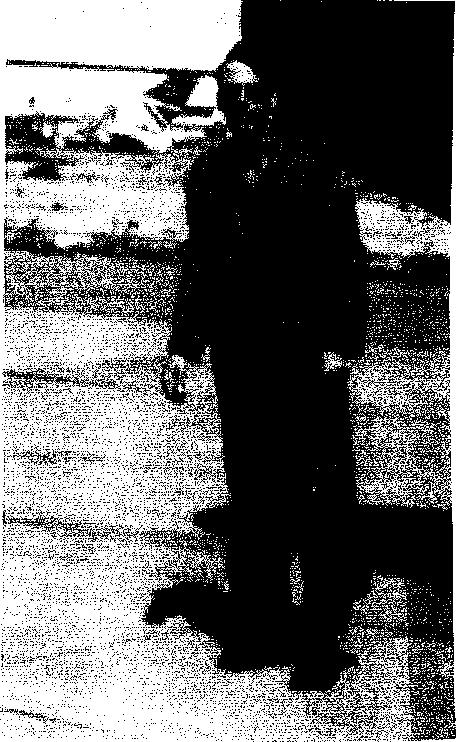MARC MC CLEARY
I graduated from Murray High School in 1977, and began my Air Force career that summer. On September 13, 1977, my father, Max McCleary, took
me to the Des Moines airport to depart for six weeks of basic training at Lackland AFB, Texas. After of completion of basic training I was sent to Sheppard AFB, Texas for Aircraft Maintenance training. This was a six-week school where I learned the basics of
how to be a Fighter Aircraft Crew Chief. In November of 1977, I received orders to Kadena AFB,
Japan. Before I could leave for Japan I had to complete another six-week school specifically designed for maintaining the F-4 Phantom airplane. Off to Homestead AFB, Florida, I went for six more weeks of training. After completion of this school I was granted 30 days leave back home.
After my leave was complete, I boarded an airplane for San Francisco, California. This was my "Port of Call" to depart for Okinawa, Japan. After a few fuel stops I arrived in Japan. Okinawa was an island 5 miles wide and 66 miles long, off the southern coast of mainland Japan. There, I worked on the F-4' s as a Crew Chief for eighteen months. During that time I travelled to Korea, Taiwan, Philippians, and Australia. I again received orders to England. |
|

|
|
It was now August 1979; I departed Okinawa and headed home for 30 days of leave before heading to England. My "Port of Call" this time was McGuire AFB, New Jersey. I arrived in Royal AFB Lakenheath, England in September 1979. There I was assigned as an F-111 Crew Chief. I lived in England until September 1985. During that time I enjoyed the history and sights of Europe. I would consider this one of my best assignments.
The Air Force then sent me to Mountain Home AFB, Idaho. There is was assigned as an F-111 Crew Chief. Mountain Home was situated in the high desert. After England, it just did not appeal to me. I then re-trained to become a C-130 Flight Engineer. I would be flying C-130s as a crew member.
After almost 18 months of various schools, Survival Training, Aircraft Performance, Basic Engineer schools I was stationed at Pope AFB, North Carolina. The base was situated with the 82nd Airborne division at Fort Bragg, NC. Our mission was to support the Army. I was stationed at Pope six years; during which time-frame I was involved in many operations and deployments. During 1988 through 1989, I was flying Special Operations missions in Central America in support of the U.S. involvement in El Salvador. In December 1989, I was tasked to fly Special Operations in "Operation Just Cause," the attack of Panama to capture Dictator Manuel Noriega.
In August of 1990, I deployed to Oman in support of "Operation Desert Shield". We flew missions supporting U.S. troops and our allies until January 1991. I was then sent to Saudi Arabia in support of "Operation Desert Storm". We flew combat missions to support the country of Kuwait. I left the desert March of 1991, and went home to Pope AFB. The deployments did not end there. During my remaining time stationed at Pope, I was deployed to support "Operation Provide Promise." We flew missions providing support to Bosnia. These missions continued for several years. Every year at Pope I deployed to Europe for 70 days to fly missions supporting forces stationed throughout Europe.
I received orders to Headquarters Air Combat Command, Langley AFB, Virginia in 1994. There I was assigned to Inspector General's inspection team, also as the Chief Flight Engineer for the command.
In 1997, I was stationed at Little Rock AFB, Arkansas as the 62nd Airlift Squadron Chief Flight Engineer. This squadron was the school-house for basic Flight Engineers. So I started my flying career in the school house and ended my flying career there. In October 2000, I retired from the Air Force with a little over 23 years in service. As one of my former Commanders wrote "It was a good run," and so it was. I met many great people and got to see the world.
Return to main page for Clarke Veterans by Fern Underwood
Last Revised June 7, 2015
